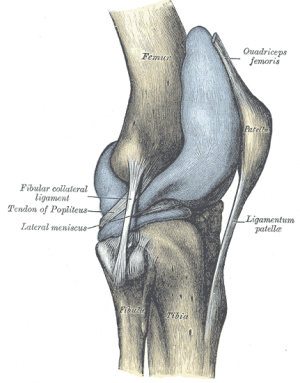Patellar Apprehension Sign
Be the first to edit this page and have your name permanently included as the original editor, see the editing pages tutorial for help.
|
Original Editor - Alan Jit Ho Mak Lead Editors |
Purpose[edit | edit source]
A physical finding in which forced lateral displacement of the patella produces anxiety and resistance in patients with a history of lateral patellar instability.[1]
add the purpose of this assessment technique here
Technique[edit | edit source]
Describe how to carry out this assessment technique here
Clinician will instruct the patient to positioned in supine or sitting on the bench with his/her knee flexed to 30 degrees. The quadriceps should be relaxed to allow passive movements of the patella. The clinician will perform this technique by using the thumb of both hands, and press on the medial side of the patella of the patient.
If the test is positive, take notice of the patient's face, as he/she maybe surprised by the amount of lateral displacement of the patella, and may feel uncomfortable or apprehensive, as the patella reaches the maximal lateral displacement. The patient may even reach for the clinician hands or attempt to straighten his/her knee in an attempt to pull the patella back to the relative normal position.
Evidence[edit | edit source]
Provide the evidence for this technique here
Resources[edit | edit source]
add any relevant resources here
References[edit | edit source]
- ↑ AHMAD, Christopher S., et al. The moving patellar apprehension test for lateral patellar instability. The American journal of sports medicine, 2009, 37.4: 791-796.
- ↑ }}<ref>Patellar Apprehension Test Available from: http://www.youtube.com/watch?v= bqysF7bzpnM [last accessed 18/10/2020]







